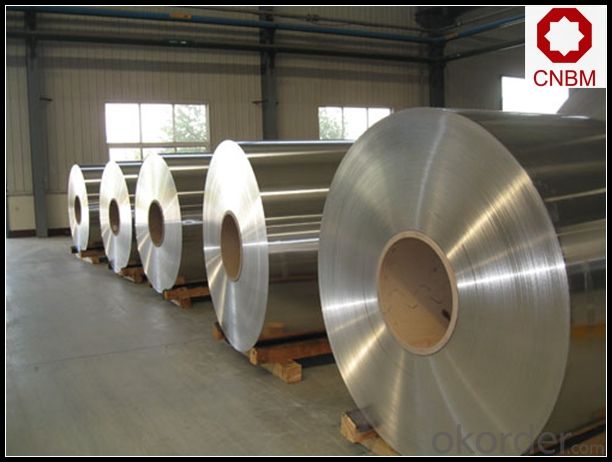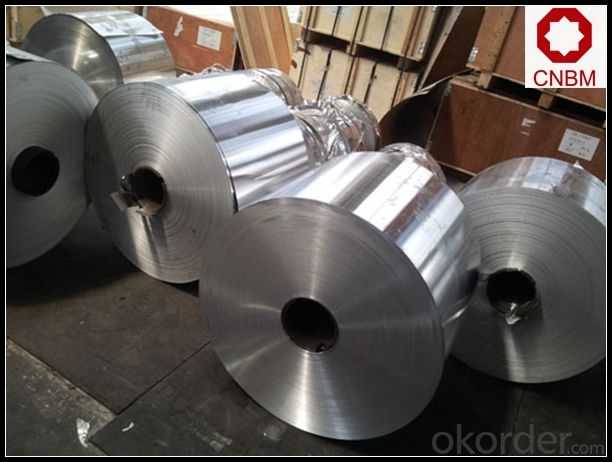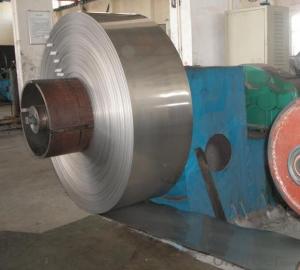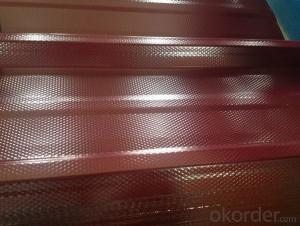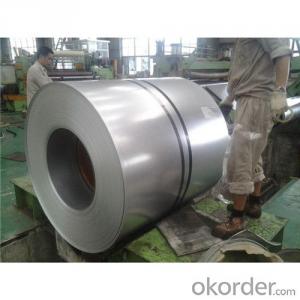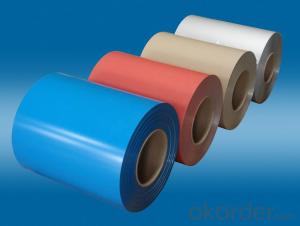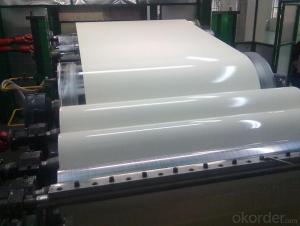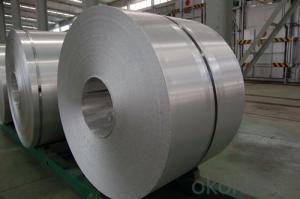Aluminum Strip Coil for Anodized Aluminum Roof Ceiling System
- Loading Port:
- Shanghai
- Payment Terms:
- TT OR LC
- Min Order Qty:
- 5 m.t.
- Supply Capability:
- 10000 m.t./month
OKorder Service Pledge
OKorder Financial Service
You Might Also Like
Specification
1. Specification of Anodized Aluminum Coil for Roof Ceiling Systerm
1) Alloy | 1050, 1060,1100, 3003 3004 3105 3A21 5005 5052 etc |
2) Temper | O/H12/H14/H1/H18/H32/H34/H36/H38//H111/H112/H116/H321/T6/T651/T3/T351 etc |
3) Thickness | 0.1mm to 6mm |
4) Width | 20mm to 3300mm |
5) Coil weight | 100kgs to 6 tons depends on actual requirement |
6) Core material | Aluminum or paper |
7) Coil Inner diameter | 75mm, 150mm, 200mm, 300mm, 405mm, 505mm or as required |
8) Protective film can be added
2. Application of Anodized Aluminum Coil for Roof Ceiling Systerm
(1).Interior: wall cladding, ceilings, bathrooms, kitchens and balconies, shutters, doors...
(2).Exterior: wall cladding, facades, roofing, canopies, tunnels,column covers , renovations...
(3).Advertisement: display platforms, signboards, fascia, shop fronts...
3. Feature of Anodized Aluminum Coil for Roof Ceiling Systerm
*Such coil is specially designed to replace aluminum ingot, due to the high export tax of aluminum ingot, the coil has better price than ingot.
*This type of coil can fit customer's remelting furnace just like ingot, no need to make any change to the production line that was previously used for ingot. The standard coil size and weight is very suitable for the feed gate of furnace.
*This type of coil causes less material wastage than ingot when remelted.
*Our coil is made directly from ore, no need to go though the ingot making process, quality is much better than other suppliers who use ingot scrap to make coil.
Be free from Oil Stain, Dent, Inclusion, Scratches, Stain, Oxide Dicoloration, Breaks, Corrosion, Roll Marks, Dirt Streaks and other defect which will interfere with use
4. Certificate:
SGS and ROHS(if client request, paid by client), MTC(plant provided), Certificate of Origin(FORM A, FORM E, CO), Bureau Veritas and SGS (if client request, paid by client), CIQS certificate
5. Image of Anodized Aluminum Coil for Roof Ceiling Systerm
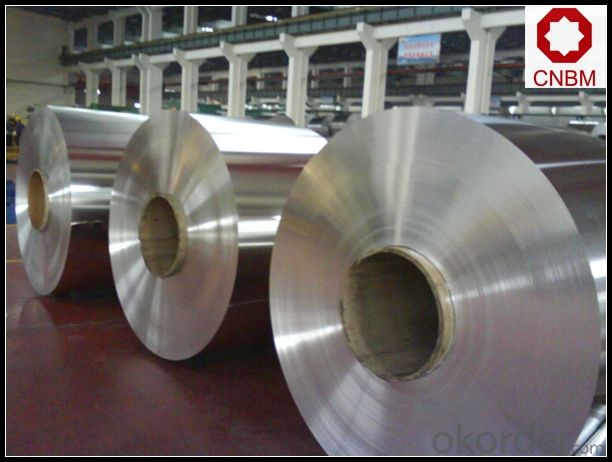
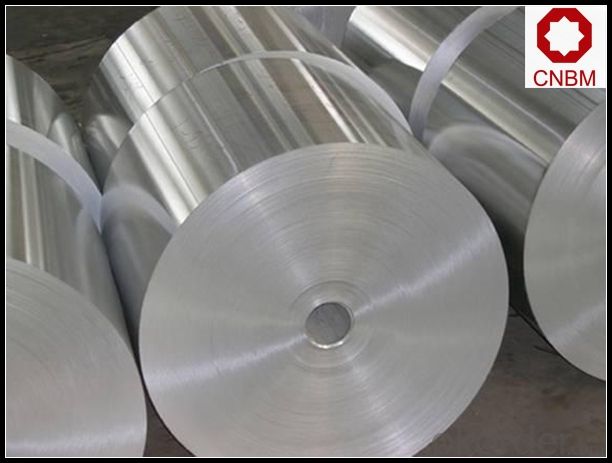

6. Package and shipping of Anodized Aluminum Coil for Roof Ceiling Systerm
eye to wall
eye to the wall
with wood pallet (wooded case also available)
7. FAQ
1) What is the delivery time?
Dpends on actual order, around 20 to 35 days
2)What is the QC system:
We have QC staff of 20 persons and advanced equipment, each production is with MTC traced from Aluminum ingot lot.
3) What market do you mainly sell to?
Australia, America, Asia, Middle East, Western Europe, Africa etc
- Q: This question asks if aluminum coils are susceptible to rusting.
- <p>Aluminum coil does not rust in the traditional sense. Instead, it forms a thin, protective layer of aluminum oxide when exposed to air, which prevents further corrosion. This oxide layer is different from rust, which is iron oxide. While aluminum can tarnish or corrode under certain conditions, such as exposure to certain chemicals or in extreme environments, it does not rust like iron or steel. Proper storage and handling can help maintain the integrity of aluminum coils and prevent unwanted reactions.</p>
- Q: Is it possible to use aluminum coils as a material for insulation?
- <p>Aluminum coils are not typically used for insulation materials. Aluminum is a good conductor of heat and electricity, which makes it unsuitable for insulation purposes where the goal is to prevent the flow of heat or electricity. Insulation materials are usually poor conductors of heat, such as fiberglass, mineral wool, or plastic foams, which help to retain heat within a space or prevent the loss of heat to the environment. Aluminum coils are more commonly used in applications where heat transfer is desired, such as in heat exchangers or electrical wiring.</p>
- Q: What is the minimum width of aluminum coils?
- Depending on specific requirements and manufacturing capabilities, the minimum width of aluminum coils can vary. Typically, aluminum coils have a minimum width ranging from approximately 0.25 inches to 0.5 inches. It is worth mentioning that specialized manufacturing processes might enable even narrower widths, although these are less frequent and may incur additional costs or limitations. Moreover, the minimum width necessary for aluminum coils will also be influenced by the specific application and industry requirements.
- Q: What are the different types of surface treatments for corrosion resistance?
- There are several different types of surface treatments for corrosion resistance, including coatings, platings, passivation, anodizing, and galvanization. Coatings, such as paint or powder coatings, provide a protective layer on the surface to prevent corrosion. Platings involve the application of a thin layer of metal, such as zinc or chrome, to provide a barrier against corrosion. Passivation is a chemical process that removes free iron and other contaminants from the surface, creating a passive layer that resists corrosion. Anodizing is an electrolytic process that forms a thick oxide layer on the surface of metals, enhancing corrosion resistance. Galvanization involves the application of a layer of zinc to the surface, providing a sacrificial barrier that corrodes instead of the underlying metal.
- Q: Can aluminum coils be used in building facades?
- Yes, aluminum coils can be used in building facades. Aluminum is a lightweight, durable, and corrosion-resistant material, making it suitable for exterior applications. Its flexibility allows for various design options, and its low maintenance requirements make it a popular choice for building facades.
- Q: How are aluminum coils protected against corrosion?
- Aluminum coils are protected against corrosion through various methods. One common method is the application of a protective coating or finish on the surface of the coil. This coating acts as a barrier, preventing the contact of the aluminum surface with moisture, oxygen, and other corrosive elements present in the environment. The coating can be a layer of paint, anodizing, or a specialized protective film. Another method used for protecting aluminum coils against corrosion is the process of alloying. By adding small amounts of other metals such as copper or zinc to the aluminum, it enhances the corrosion resistance of the alloy. These alloyed metals create a protective oxide layer on the surface of the aluminum, which acts as a shield against corrosion. In addition to coatings and alloying, proper cleaning and maintenance of aluminum coils are crucial for preventing corrosion. Regular cleaning helps remove any contaminants or corrosive substances that may have accumulated on the surface of the coils. This ensures that the protective coatings or oxide layers remain intact and effective in preventing corrosion. Furthermore, proper installation and sealing of aluminum coils are essential to protect them against corrosion. Effective sealing prevents moisture or other corrosive agents from entering the coil's interior, which can lead to corrosion over time. Overall, a combination of protective coatings, alloying, regular cleaning, and proper installation techniques play a vital role in safeguarding aluminum coils against corrosion, ensuring their longevity and optimal performance.
- Q: 11 g of aluminum at 200 C and 19 g of copper are dropped into 55 cm^3 of ethyl alcohol at 15 C. The temperature quickly comes to 24 C. What was the initial temperature of the copper? (answer in C) Express your answer using two significant figures.
- Quantity of heat given by aluminium = mc θ = 0.011* 913*(200 - 24) = 1767.6 J. . Quantity of heat given by copper = mc θ = 0.019* 385*(T - 24) = 7.315 T -175.56 J. . Mass of ethyl alcohol = volume * density = 0.000055 m^3 *789 = 0.043395 kg. Quantity of heat gained by ethyl = mc θ = 0.043395 * 2500*(24 - 15) = 976.3875 J heat lost.= Heat gained 1767.6 + 7.315 T -175.56 = 976.39 7.315 T = -615.65 T = -84.17 ?C This shows that copper also gains heat. ======================================...
- Q: An aluminum bar 3.80 m long has a rectangular cross section 1.00 cm by 5.00 cm, what is the resistance and what is the length of a copper wire 1.50 mm in diameter having the same resistance?
- I used ρ=2.63 ×10??Ωm for aluminum and got the right answer. The wikipedia page says your aluminum ρ = 2.82×10??Ωm is used for high voltage power lines.
- Q: Can aluminum coils be used in wastewater treatment plants?
- Yes, aluminum coils can be used in wastewater treatment plants. Aluminum coils are commonly used in heat exchangers within wastewater treatment plants to transfer heat effectively and efficiently. They are resistant to corrosion and can withstand the harsh environment of wastewater treatment processes.
- Q: Are aluminum coils suitable for beverage can manufacturing?
- Aluminum coils are indeed appropriate for the production of beverage cans. Aluminum is the favored material for this purpose because of its numerous beneficial characteristics. To begin with, aluminum is lightweight, enabling easy transportation and handling. This is especially crucial in the beverage industry, where a substantial number of cans are manufactured and distributed. Furthermore, aluminum possesses high malleability, allowing it to be shaped into the desired form without compromising its structural integrity. This quality makes it perfect for the manufacturing of cans, as it can be effortlessly molded into the cylindrical shape required and withstand the pressure exerted by carbonated beverages. Moreover, aluminum is non-toxic, ensuring that it does not contaminate the beverages stored within the cans. It also acts as a protective barrier against light, oxygen, and moisture, effectively preserving the flavor and quality of the beverages. Additionally, aluminum is recyclable, thus making it an environmentally friendly option for can production. The recycling process for aluminum consumes significantly less energy than the production of new aluminum, rendering it a sustainable material choice. In summary, the appropriateness of aluminum coils for beverage can manufacturing is evident due to their lightweight nature, malleability, non-toxicity, preservation properties, and recyclability.
Send your message to us
Aluminum Strip Coil for Anodized Aluminum Roof Ceiling System
- Loading Port:
- Shanghai
- Payment Terms:
- TT OR LC
- Min Order Qty:
- 5 m.t.
- Supply Capability:
- 10000 m.t./month
OKorder Service Pledge
OKorder Financial Service
Similar products
Hot products
Hot Searches
Related keywords


